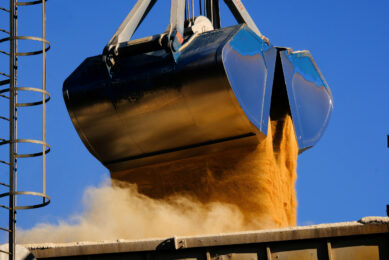Improving dioxin analysis in feed

Stringent regulations are crucial to ensure the safety of foods of animal origin. Feed safety is the first step in the production chain, and so accurate detection of low level dioxins in feed is vital to minimise risk to both animal and human health.
Contamination is an important issue in the feed industry. Feed contaminants include heavy metals, dioxins, mycotoxins, and bacteria, posing serious risk to public health. Polychlorinated dibenzo-p-dioxins (PCDDs) and polychlorinated dibenzofurans (PCDFs) are a common contaminant and have been linked to causing cancer, endocrine disruption, and reproductive disorders. 1Of the 210 different dioxin compounds, 17 are of toxicological concern.
Controlling dioxin contamination
Dioxins are formed unintentionally as by-products from a number of human activities including industrial processes, such as production of chemicals, and combustion processes, such as waste incineration. When released into the air, dioxins can deposit on the local environment, on plants and soil. As a result, animal feed is often implicated as the source of dioxin in foods of animal origin. Dioxins accumulate in fatty tissues, so even extremely low levels of dioxin in feed can become significant over the lifetime of an animal, and result in unacceptable residues in human foods. Human exposure to dioxins is predominantly through food of animal origin, with approximately 90% of the total exposure via fats in fish, meat, and dairy products.
Detection innovation
Requirements in the feed chain are set by different feed certification schemes in order to keep the risks under control. For example, The European Commission sets maximum levels for dioxins in food, giving food processors parameters to test and monitor when sourcing their ingredients and releasing products to market. Any food or feed that exceeds the acceptable levels is not permitted to be marketed in the EU. Also in China, the topic of feed and food safety is high on the agenda. The Institute of Quality Standard and Testing Technology for Agro Products (IQSTAP) in Beijing, China, is dedicated to achieving further improvements of feed safety in China. The Centre is part of the Chinese Academy of Agricultural Sciences (CAAS), established in 2003. IQSTAP uses what is considered to be the international gold standard method for detecting PCDDs and PCDFs – isotope dilution high-resolution gas chromatography (GC) coupled with high-resolution magnetic mass spectrometry (MS). The European Commission has established that GC-MS/MS may be used as a confirmatory method for PCDD and PCDF detection.
Improved sensitivity and selectivity
In order to meet the need for ever-lower limits of detection, greater sensitivity is required from analytical techniques like GC-MS. Additionally, reducing the injected volume of samples has been shown to minimise matrix effects and the contamination on instrumentation. Subsequently, IQSTAP has developed a GC-MS/MS with atmospheric pressure gas chromatography (APGC) technique to analyse 17 of the most toxic PCDDs and PCDFs. The Center has found APGC-MS/MS to be a very sensitive detection system for the accurate determination of dioxins and furans at regulatory levels. APGC is considered to provide numerous advantages in comparison to traditional dioxin analysis methodology2.
The sensitivity of the technique allows detection of contaminant limits at ultra-trace levels in the most complex samples, achieving compliance with regulatory limits on the presence and quantity of toxic PCDDs and PCDFs. In addition, because scientists at IQSTAP could inject less sample matrix, the APGC technique reduced the effects of contamination on the instrumentation – and therefore increased uptime. The technique also reduced the cost of tests for contaminants due to its improved sensitivity and selectivity, using only half the materials needed with the previously used techniques and analysing them at a lower concentration. The ability to eliminate the matrix effect also reduced the need for time-consuming purification steps, helping IQSTAP to provide faster results for time-sensitive analyses.
Conclusion
Detection and quantification of contaminants in feed is vital to reduce dioxin exposure to animals and humans, and alleviate potential repercussions. Selectivity and sensitivity are key for efficient and effective dioxin analysis.
Dr Xiaomin Li works at the Institute of Quality Standard and Testing Technology for Agro Products. References 1-2 are available on request.











